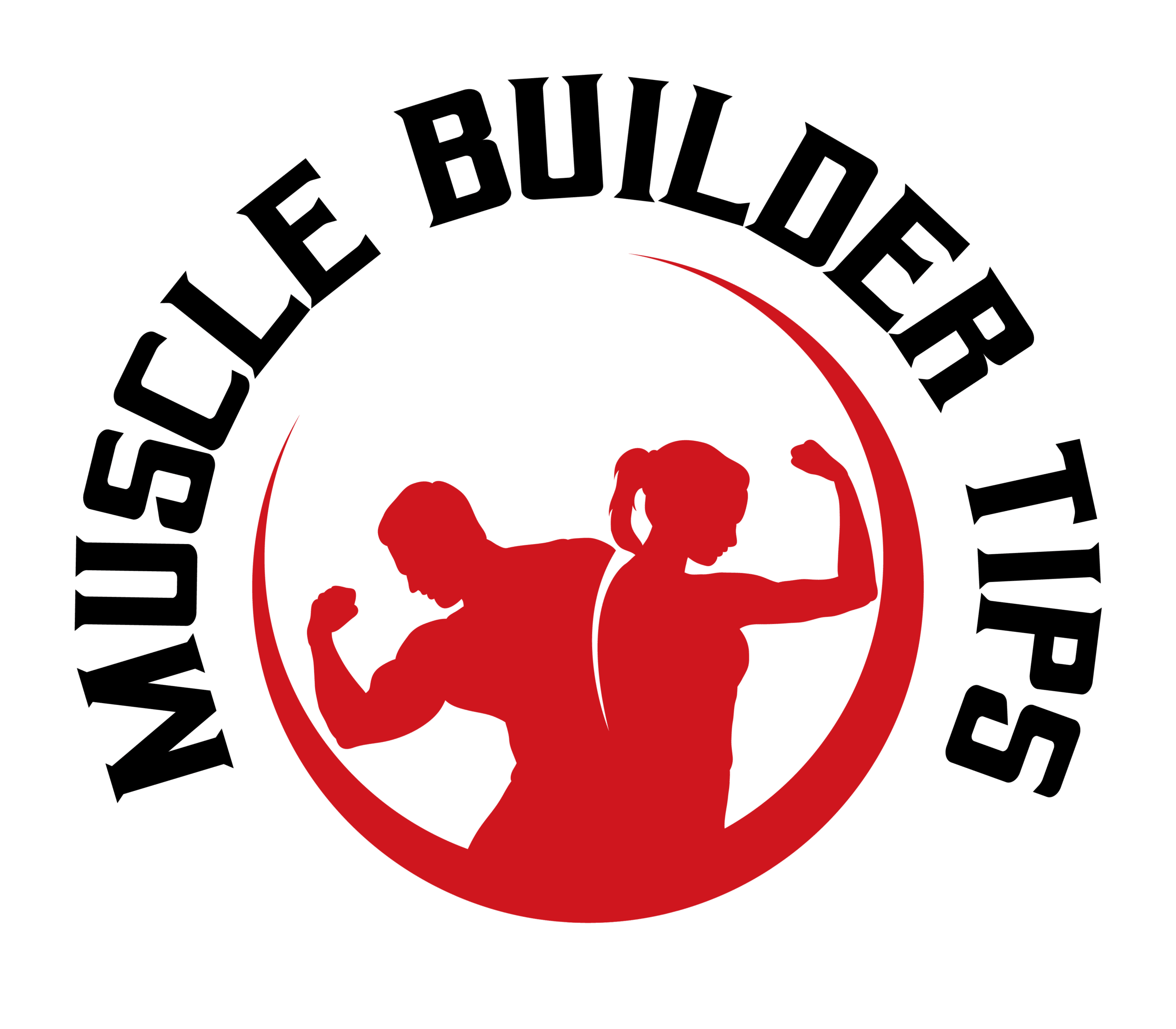
Have you ever wondered, how long does it take to build muscle and lose weight? Well, you’re not alone! Many people are on a constant quest to improve their physical fitness and achieve their desired body goals. Whether you’re new to the fitness world or have been working out for a while, understanding the timeline of building muscle and losing weight can be helpful in setting realistic expectations and staying motivated on your fitness journey.
Building muscle and losing weight are two different processes that depend on various factors such as genetics, diet, exercise routine, and overall lifestyle. While there is no one-size-fits-all answer to how long it takes, most experts suggest that it takes consistency, dedication, and patience to see significant results. In general, it may take a few weeks to a few months of regular strength training and proper nutrition to start noticing muscle growth. Similarly, losing weight also requires a combination of healthy eating, regular physical activity, and creating a calorie deficit. It’s important to remember that everyone’s body is different, so the time it takes to build muscle and lose weight may vary from person to person. In our upcoming article, we will explore these topics in more detail and provide some tips to help you maximize your fitness journey. Stay tuned to learn more about how you can build muscle and lose weight in a realistic and sustainable way!
How Long Does It Take To Build Muscle And Lose Weight
If you’re on a fitness journey, you may often wonder, “How long does it take to build muscle and lose weight?” While there is no one-size-fits-all answer to this question, several factors come into play. Genetics, fitness level, diet and nutrition, workout intensity and frequency, and rest and recovery all play a significant role in achieving your desired results. In this article, we will explore these factors and provide insights into the timeframe for building muscle and losing weight.
Factors Affecting Muscle Building and Weight Loss
Genetics
Genetics is a factor that can influence your muscle-building and weight-loss journey. Some individuals may naturally have a higher muscle-building potential, while others may struggle to gain muscle mass. Similarly, some people have a faster metabolism, making it easier for them to lose weight. However, it’s important to note that genetics should never be used as an excuse. While it may affect your progress, with dedication and effort, you can still achieve your goals.
Fitness Level
Your current fitness level also plays a crucial role in determining the timeframe for building muscle and losing weight. If you’re a beginner, you may experience initial gains relatively quickly. As you progress to becoming an intermediate or advanced lifter, the rate of muscle growth may slow down. Additionally, those who are new to exercise may see more significant weight loss in the initial stages compared to someone who has been working out for an extended period.
Diet and Nutrition
Diet and nutrition are essential factors in both muscle building and weight loss. To build muscle, you need to consume an adequate amount of protein to support muscle repair and growth. A caloric surplus is often necessary to fuel muscle growth. On the other hand, weight loss requires a caloric deficit, where you consume fewer calories than you burn. A balanced diet rich in lean protein, whole grains, fruits, and vegetables is crucial to support your goals.
Workout Intensity and Frequency
Your workout intensity and frequency are directly related to muscle building and weight loss. To build muscle, you need to engage in resistance training that challenges your muscles. Progressive overload, where you gradually increase the weight or intensity of your workouts, is essential for continued muscle growth. Similarly, for weight loss, incorporating aerobic exercise and strength training can help burn calories and increase metabolic rate.
Rest and Recovery
Rest and recovery are often overlooked aspects of muscle building and weight loss. Your muscles need time to repair and recover after intense workouts. Overtraining can lead to fatigue and hinder progress. Adequate sleep, proper nutrition, and incorporating rest days into your routine are vital for optimal results.
Building Muscle
Muscle Adaptation
Building muscle occurs through a process called muscle adaptation. When you challenge your muscles with resistance training, they undergo microscopic damage. During the recovery process, they repair and grow stronger to withstand future challenges. This constant cycle of stress, recovery, and adaptation leads to muscle growth.
Progressive Overload
Progressive overload is a principle that forms the foundation of muscle building. To continually stimulate muscle growth, you need to progressively increase the demands placed on your muscles. This can be achieved by increasing the weight lifted, the number of repetitions, or the volume of your workouts over time.
Resistance Training
Resistance training, often involving weights or resistance bands, is crucial for building muscle. It stimulates muscle fibers, leading to muscle hypertrophy (growth). Compound exercises that engage multiple muscle groups, such as squats, deadlifts, and bench presses, are particularly effective for muscle building.
Protein Synthesis
Protein synthesis is another essential process in muscle building. When you consume protein, it is broken down into amino acids, which are then used to repair and build new muscle tissue. Consuming an adequate amount of protein, especially after workouts, helps maximize muscle growth.
Muscle Fiber Types
Muscle fibers are classified into two main types: type I (slow-twitch) and type II (fast-twitch). Type I fibers are more endurance-focused and resistant to fatigue, while type II fibers are larger and responsible for explosive movements. Both types of fibers can be trained and contribute to muscle growth, but training strategies may vary to target specific fiber types.

Timeframe for Building Muscle
Varies from Person to Person
The timeframe for building muscle varies greatly from person to person. Factors such as genetics, fitness level, diet, and training intensity all influence the rate of muscle growth. While some individuals may see noticeable changes within a few months, others may take longer to achieve their desired results.
Beginners: Initial Gains
For beginners, building muscle is often referred to as the “honeymoon phase.” During this phase, the body is not accustomed to resistance training, leading to rapid strength gains and muscle growth. This initial progress can provide motivation and encouragement to continue on the fitness journey.
Intermediate and Advanced Lifters
As you progress from being a beginner to an intermediate or advanced lifter, the rate of muscle growth may slow down. This is because the body has already adapted to the demands of resistance training, and new muscle fibers are not being created as quickly. However, with consistent effort and proper training, muscle growth can still be achieved.
Plateaus and Breaking Through
Muscle-building plateaus are common and can be frustrating. When progress seems to stall, it’s essential to reassess your training program and make adjustments. Increasing workout intensity, trying new exercises, or altering your training split can help break through plateaus and stimulate new muscle growth.
Losing Weight
Caloric Deficit
Weight loss occurs when you consume fewer calories than you burn, creating a caloric deficit. To lose one pound of weight, you need to create a deficit of approximately 3,500 calories. It’s important to create a moderate caloric deficit to ensure sustainable weight loss and minimize muscle loss. Crash diets or severe caloric restrictions can lead to muscle loss and metabolic slowdown.
Aerobic Exercise
Aerobic exercise, such as running, swimming, or cycling, is an effective way to burn calories and support weight loss. It increases your heart rate and overall energy expenditure, helping to create a caloric deficit. Incorporating both steady-state cardio and high-intensity interval training (HIIT) can maximize the benefits of aerobic exercise.
Strength Training
Strength training is crucial during weight loss to maintain muscle mass. While creating a caloric deficit, the body may break down muscle tissue for energy. Resistance training helps preserve muscle and can even promote fat loss. It also contributes to an increase in metabolic rate, as muscle requires more energy to maintain than fat.
Metabolism and Hormonal Factors
Metabolism and hormonal factors also influence weight loss. Each person’s metabolism is unique, and some individuals naturally have a faster metabolism, making it easier for them to lose weight. Hormonal imbalances, such as low thyroid function or imbalanced cortisol levels, can affect weight loss efforts. Consulting with a medical professional can help address these concerns.
Mindful Eating
Mindful eating practices can aid in weight loss by increasing awareness of hunger and fullness cues. Paying attention to portion sizes, choosing nutrient-dense foods, and avoiding emotional or stress-related eating are all important aspects of mindful eating. It’s also important to address any underlying emotional or psychological factors that may contribute to unhealthy eating habits.

Timeframe for Weight Loss
Depends on Individual Goals
The timeframe for weight loss depends on individual goals and starting point. Losing weight at a slower rate, typically 1-2 pounds per week, is generally considered safe and sustainable. Rapid weight loss may lead to muscle loss and can be difficult to maintain in the long term. Setting realistic goals and focusing on overall health rather than quick fixes is key.
Safe and Sustainable Approach
A safe and sustainable approach to weight loss involves a combination of creating a caloric deficit through diet and exercise, incorporating strength training to preserve muscle mass, and making long-term lifestyle changes. Crash diets and extreme measures may result in short-term weight loss but often lead to regain once normal eating patterns are resumed.
Lifestyle Changes and Long-Term Success
Weight loss is not just about a number on the scale; it’s about adopting healthy habits and making long-term lifestyle changes. Incorporating regular physical activity, choosing nutritious foods, managing stress, and getting enough sleep are all crucial for sustainable weight loss. Gradual changes that can be maintained over time are more likely to lead to long-term success.
Plateaus and Adjusting Strategies
Weight loss plateaus are common and can be frustrating. As the body adjusts to a lower caloric intake and increased activity level, weight loss may slow down or temporarily stall. During these times, it’s essential to stay consistent and reevaluate your strategies. Adjusting your caloric intake, increasing workout intensity, or trying new activities can help overcome plateaus and continue progressing towards your goals.
Importance of Consistency and Patience
Consistency and patience are fundamental elements in both muscle building and weight loss journeys. Results are not achieved overnight but rather through continuous effort and dedication. It’s important to have realistic expectations and understand that progress may be slower at times. Small, gradual improvements over time lead to long-term success.
Gradual Progression
Gradual progression is key in both muscle building and weight loss. Pushing yourself too hard, too soon can lead to burnout or injury. Gradually increasing workout intensity, adjusting nutritional habits, and making lifestyle changes over time create a strong foundation for sustainable progress.
Sticking to a Routine
Consistency is crucial for achieving desired results. It’s important to stick to a workout routine and maintain a balanced diet even on days when motivation is low. Being consistent with your efforts ensures that you continue to move forward on your fitness journey.
Monitoring and Adjusting
Regularly monitoring your progress is essential for staying on track and making necessary adjustments. Keep track of your workouts, body measurements, and how you feel both physically and mentally. This allows you to identify patterns, track improvements, and make informed decisions regarding your training and nutritional strategies.
Managing Expectations
Managing expectations is essential to avoid frustration or disappointment. Set realistic goals based on your individual circumstances and be patient with the process. Focus on the progress you have made rather than comparing yourself to others. Remember that everyone’s journey is unique, and the time it takes to achieve results will vary.
Avoiding Common Pitfalls
Overtraining
Overtraining occurs when you push your body beyond its limits without allowing for adequate rest and recovery. It can lead to fatigue, decreased performance, and increased risk of injury. Listen to your body’s signals and give yourself enough time to rest and recover between workouts.
Neglecting Nutrition
Nutrition plays a crucial role in both muscle building and weight loss. Neglecting proper nutrition can hinder progress and lead to suboptimal results. Ensure you are consuming enough calories and macronutrients to support your goals. Aim to fuel your body with wholesome, nutrient-dense foods to optimize performance and recovery.
Not Listening to Your Body
Listening to your body is essential in any fitness journey. Pay attention to signals of fatigue, pain, or injuries. Pushing through discomfort may lead to more significant issues in the long run. Be mindful of your body’s limits and adjust your training or rest days accordingly.
Lack of Sleep
Sleep is often undervalued but plays a vital role in muscle building and weight loss. Lack of sleep can hinder muscle recovery, increase appetite, and negatively affect hormonal balance. Aim for 7-9 hours of quality sleep each night to support optimal performance and overall health.
Seeking Professional Guidance
Personal Trainers
Working with a personal trainer can offer valuable guidance and expertise in designing an effective workout program tailored to your goals. They can teach proper form and technique, provide motivation, and help you avoid common pitfalls.
Dietitians and Nutritionists
Consulting with a registered dietitian or nutritionist can provide personalized guidance regarding your diet and nutrition. They can help you create a well-balanced meal plan, address any nutritional deficiencies, and ensure you are meeting your specific dietary needs.
Medical Professionals
If you have any underlying health conditions or concerns, it’s essential to consult with medical professionals such as your primary care physician or a sports medicine specialist. They can provide guidance, conduct necessary assessments, and address any potential risks or contraindications.
Fitness Communities and Support
Joining fitness communities or seeking support from like-minded individuals can provide motivation and accountability. Surrounding yourself with positive influences who share similar goals can enhance your progress and provide a sense of belonging.
Tracking Progress and Setting Goals
Measuring Body Composition
Tracking changes in body composition is a more accurate indicator of progress than relying solely on scale weight. Utilize methods such as measuring body fat percentage, taking progress photos, and tracking waist or hip circumference to assess changes.
Tracking Strength and Endurance
Monitoring improvements in strength and endurance can also help gauge progress. Keep track of your performance in the gym by recording weights lifted, repetitions completed, or time taken to complete specific exercises. Gradually increasing these markers signifies progress.
Setting Realistic and SMART Goals
Setting realistic and specific goals is essential for maintaining motivation and focus. Use the SMART (Specific, Measurable, Achievable, Relevant, Time-bound) goal-setting framework to create goals that are attainable and provide a clear roadmap for success.
Celebrating Milestones
Celebrating milestones along the way is crucial for staying motivated and developing a positive mindset. Acknowledge your accomplishments, whether they are small or significant. Treat yourself to non-food rewards or celebrate with a workout partner or support network.
Conclusion
Building muscle and losing weight are journeys that require time, effort, and consistency. Individual factors such as genetics, fitness level, diet, and nutrition play a significant role in determining the timeframe for achieving desired results. It’s crucial to prioritize overall health, well-being, and sustainable practices throughout your muscle-building and weight loss journey. Seeking professional guidance, tracking progress, and setting realistic goals will enhance your progress and provide valuable insights. Remember to be patient, enjoy the process, and celebrate milestones along the way.
